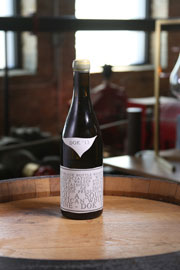- Analysis
- Vineyards
- Vinification and Aging
- Tasting Notes
- 2013 Vintage Notes
BLANKbottle “DOK” 2013
Wine of Origin
Elgin
Varietals
Primarily Riesling with a bit of Semillon and Sauvignon Blanc
Analysis
Wine Maker: Pieter H. Walser
Alcohol: 13.5%
Owning a farm limits you to the vineyards on your specific farm. I love traveling and experiencing many different areas. I want to make area specific wines, wines that will be ambassadors for areas. I harvest 55 tons from 47 vineyards; 26 different varietals and growing – anything from Fernao Pirez to Cabernet. In the 2015 harvest, I drove 13 000 killometers in 100 days to pick my grapes.
Vineyard-site selection is where all wine begins, and to me personally, one of my most crucial decisions. In Valley Road, Elgin, DOK Gary (our family doctor) farms with Riesling, Semillon and Sauvignon blanc. The 3 vineyards aren’t very big and grow on top of a rocky mountainous outcrop in red rocky clay soil.
Like most of my wines, absolutely nothing was added – NO sulphur before fermentation, NO yeast, NO acid… Just a tiny bit of sulphur after fermentation and before bottling.
The 2013 “DOK” is a medium bodied white blend with bright fresh acidity and a rich stone fruit driven bouquet. Fresh peaches, nectarines, and white flowers are supported by the secondary aromas of orange oil and wet stones. Complex and inviting, this unique wine is a very special example of a South African white blend.
The 2013 vintage was without a doubt one of the most challenging yet rewarding vintages of the past few years. Superb winter and spring conditions set the stage, but this was followed by occasional humid conditions in February and March which meant that canopy management before veraison was the key to healthy fruit. The growing season was a good one, with quantity up around 5 to 20 percent, depending on where you were, and good quality thanks to a long and lovely ripening period. Our only challenge was a lot of rain and cold over Easter when we were mid-harvest.

